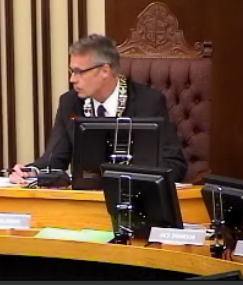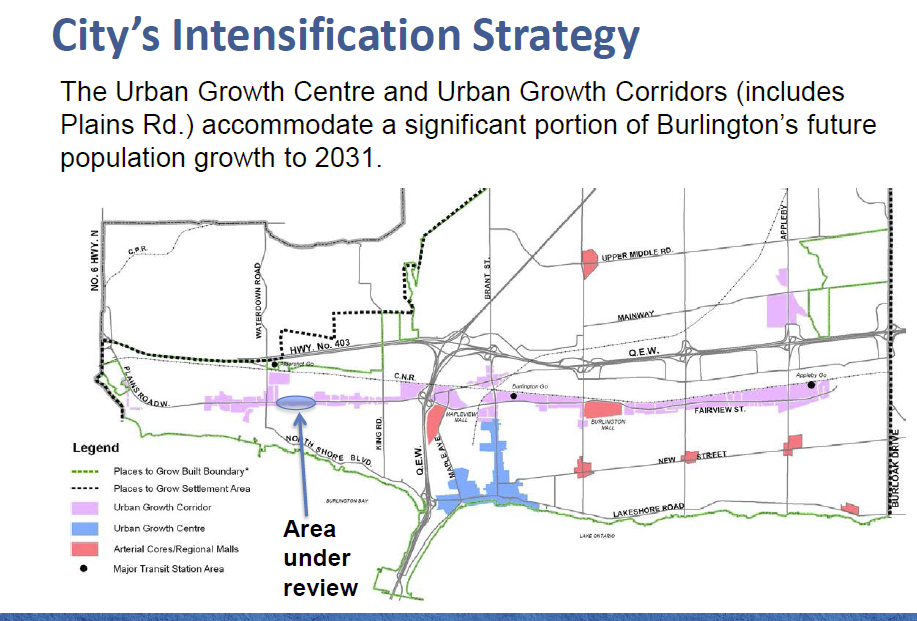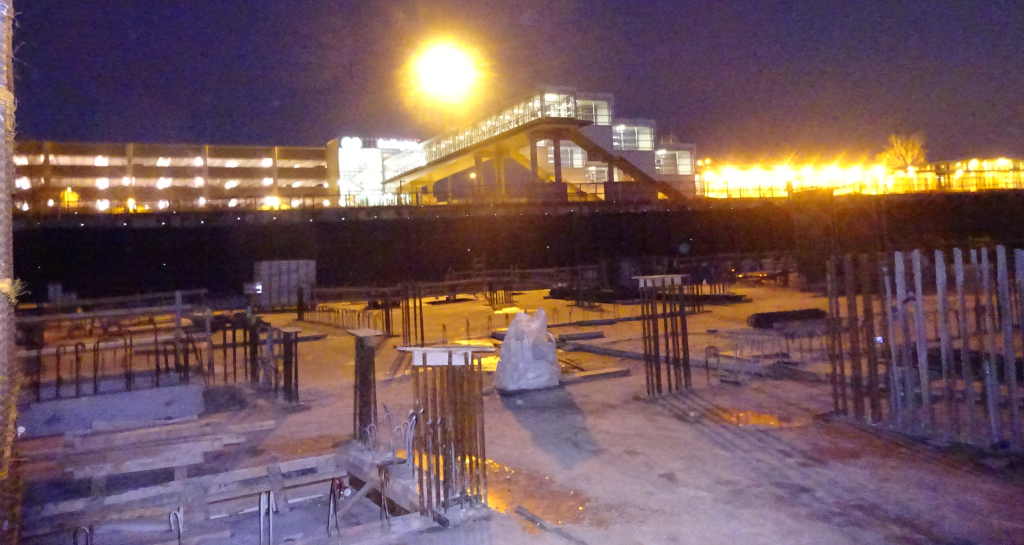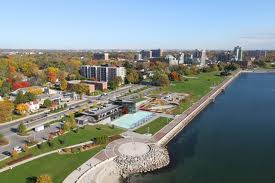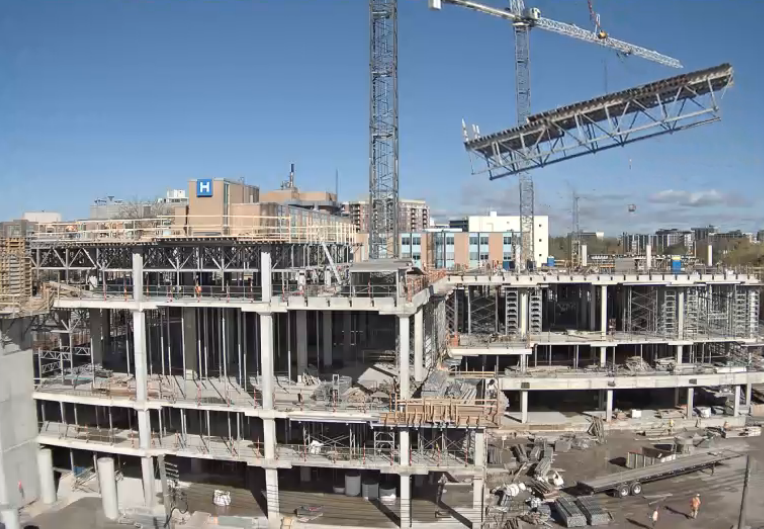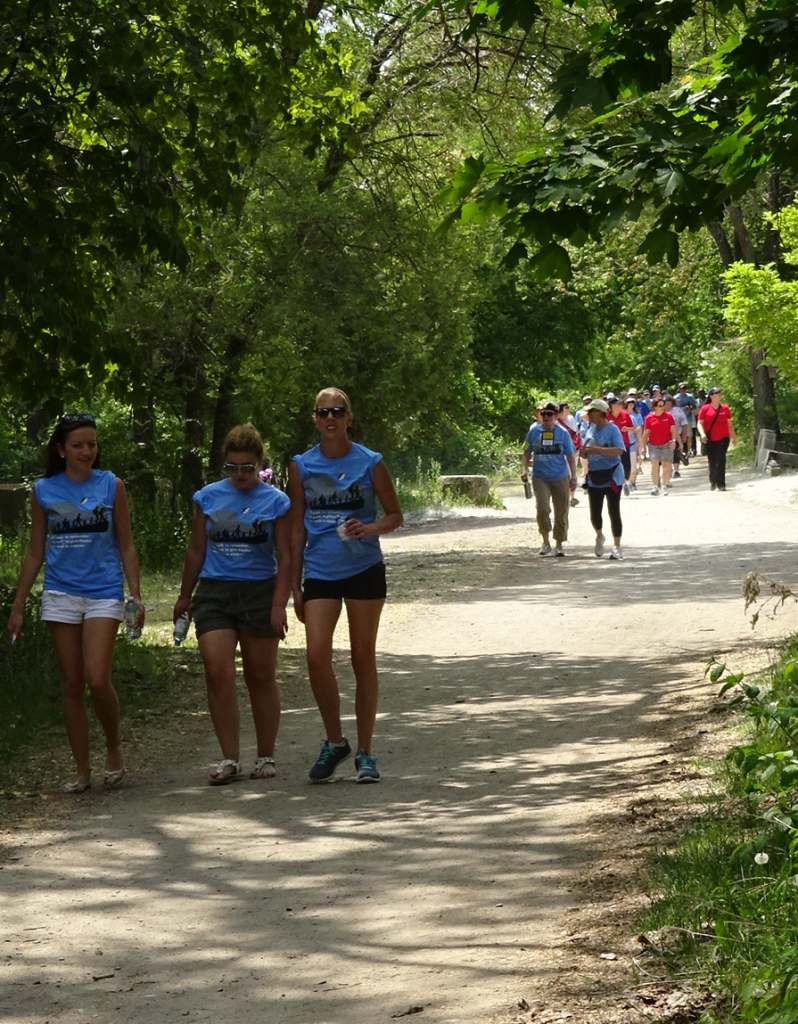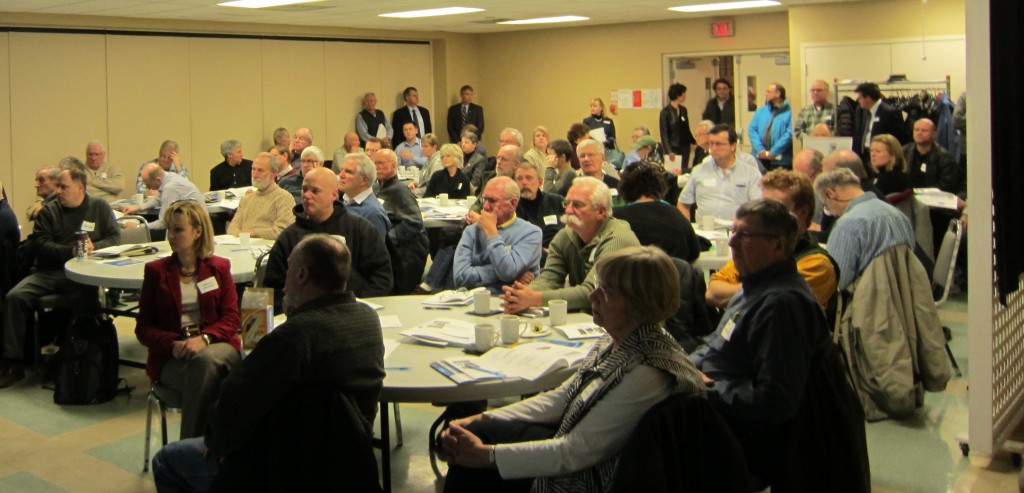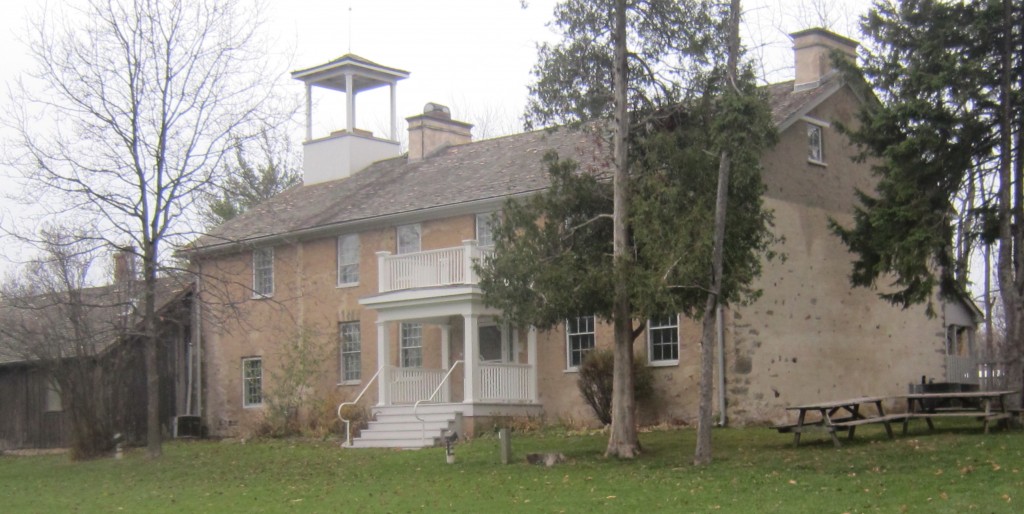January 29, 2016
BURLINGTON, ON
The Gazette has published the Mayor’s State of the City report for most of the last five years. Links to previous addresses at at the bottom of the 2016 address.
Theologian Leonard Sweet said, “The future is not something we enter. The future is something we create.” Today, I would like to talk to you about Burlington’s future.
I am pleased to share that after more than a year of cooperation and collaboration between the community, City Council and city staff, Burlington’s 2015 to 2040 Strategic Plan is almost finalized. Staff is currently making final revisions based on your feedback before sending the completed document to council for approval this spring.
The city is undergoing an important transition, one that some municipalities don’t step up to. In addition to our core mandate of providing a range of critical city services, council has decided to add a new mandate, to actively “city-build.”
City-building entails using all of the tools available to council and working with partners to actively shape the physical, social, economic and cultural fabric of the city.
The new Strategic Plan is fundamentally different than past plans. It is the twenty-five-year blueprint for city-building, and will be supported in more detail with the Official Plan, Transportation Master Plan, and the Corporate Work Plan. Collectively these plans will be setting ambitious, clear and measurable targets for physical growth, sustainability, carbon neutrality, economic growth, changing how people move around the city and how we engage with the public.
Burlington is one of the first Southern Ontario municipalities to stop sprawling and instead grow in place, something many other municipalities will be faced with in the next decade or two. We are leading the way, and are the ‘poster child’ for David Crombie’s recent report on how municipalities in Southern Ontario should be evolving.
As we stop sprawling, we are now going to focus more deliberately on our rural area through our Strategic Plan and Official Plan.
In preparation, we are actively changing our internal management structures, planning processes, and where necessary, skills and resources to support this new agenda.
There are four key directions outlined in our new Strategic Plan, including: A City that Grows, A City that Moves, A Healthy and Greener City and An Engaging City.
Today, I will talk about these directions, highlight the objectives in each section and discuss achievements of the past year related to the four strategic themes.
A City That Grows
A City That Grows is one where Burlington is a magnet for talent, good jobs and economic opportunity while having achieved intensification and balanced, targeted population growth for youth, families, newcomers and seniors.
Promoting Economic Growth
I believe that economic development is the key to a vibrant, prosperous Burlington – whether five or twenty-five years into the future.
Our results in 2015 were steady. Our key metrics are in line. However, vacant employment land supply is low and we are working to activate key employment lands to provide some much-needed inventory for business to locate.
We are also working through our Official Plan and recognizing that with over 88 per cent of employment land already in use, and a large portion of this development more than 50 years old, we need policies to support redevelopment of these employment areas.
Several expansions took place, most noticeably Cogent and Evertz with significant physical expansions. There are many others in our community with aggressive growth plans.
We are working on a number of office and industrial developments for 2016 and we expect to continue to meet out targets in the short term.
As the global economy becomes more and more connected, innovation and globalization are critical to our future. With global competition and the race to low labour costs, our businesses must innovate and utilize new and emerging technologies, supply chains and intellectual property to prosper.
Cities and governments around the world recognize this. Investments in innovation and industry coordination are increasing in certain jurisdictions. Germany and Austria, for example, have introduced Industry 4.0 and are investing more than 70 billion Euros to ensure that manufacturers are operating at the leading edge. The U.K., U.S. and many others are moving in this direction.
The province of Ontario is recognized as one of the best places to start a business. We are not, however, having the success we need growing these businesses. Data shows that 75 per cent of new jobs come from new businesses, primarily between year two and year seven of operations.
Recognizing these trends, our focus for economic development is shifting. Traditionally, we have focused on retaining the businesses we have. Going forward we will be:
Focusing on supporting start-up and growth businesses.
Developing a Regional Employment and Innovation District, which better reflects the work environment companies are looking for and is connected to our highway and public transit network.
Supporting population growth and initiatives to attract and retain the talent that we need to have. This includes youth, young families and professionals, and a more welcoming environment for newcomers.
Improving our transit connectivity to employment areas including looking beyond our borders is critical. After all, almost 35,000 people go back and forth for work between Burlington and Hamilton every day.
Working with our post-secondary education partners to ensure that employers have the talent that they need and that we as a community are taking advantage of the more than 10,000 annual graduates from our local institutions. We are currently working with Mohawk, Sheridan, Brock and McMaster to provide better access to research and development for local business.
Within the coming months, DeGroote will be finishing the fourth floor of the Ron Joyce Centre. This will be the home of the new Michael G. DeGroote Health Leadership Academy, as well as a Centre for Evidence Based Management. McMaster’s DeGroote School of Business is also launching their new Executive MBA program in Digital Transformation this year.
In 2016, we will continue to work with industry, education and senior levels of government to support the development of an Advanced Manufacturing Hub in Burlington, which will assist manufacturers in Burlington, Halton and Southern Ontario in becoming more competitive globally.
Burlington has a strong, diversified local economy. We will continue to support this, and invest in the future to ensure prosperity in the long term.
Intensification
Intensification is another key aspect to the future of our city outlined in the proposed Strategic Plan.
To understand intensification – the greater concentration of people living and/or working in a defined area – we need to understand what factors are influencing the future of Burlington.
Burlington is built out. There is very little room left for traditional greenfield suburban-type development. Fifty per cent of Burlington is rural, agricultural, natural greenbelt and the vast majority of people I talk to want to keep it that way. North Aldershot, Mount Nemo, Lowville and Kilbride areas house the Bruce Trail, Lowville Park, the Cootes to Escarpment Eco Park System and many other natural features. As the Greater Golden Horseshoe Area becomes more urbanized, the importance of maintaining these assets will only magnify.
Primarily because of immigration, 150,000 people move to the Greater Golden Horseshoe area every year resulting in 3.7 million new residents and 1.8 million new jobs in the next twenty-five years.
The Ontario government released the Places to Grow Plan for the Greater Golden Horseshoe in 2006 defining how we should accommodate this growth.
Halton Region agreed to accept growth of 315,000 people and 175,000 jobs by 2031, with best planning estimates stating that Milton will grow to 228,000, Oakville 246,000 and Burlington 186,000 by 2031. Burlington is close to 186,000 people now.
In a city that is out of traditional greenfield land, where 50 per cent of our city is protected greenbelt land, the next question is: Where do we grow?
Downtown is an Urban Growth Centre in the Ontario Places to Grow Plan and is targeted to have approximately 200 jobs and people per hectare by 2031. It is two-thirds of the way there now.
Our Official Plan also identifies other sites suited for intensification, such as Uptown located at Appleby Line between Mainway and Upper Middle Road.
The Fairview/Plains Road corridor. When we talk about the transformation of Plains Road through intensification, it is important to recognize the leadership and vision of Councillor Rick Craven.
The areas around our three GO Stations – Aldershot, Burlington and Appleby.
Aging retail plazas like Roseland, Eastway and Lakeside.
We anticipate that 80 per cent of our urban area will not experience significant change.
If we take federal and provincial policies out of the picture, what makes sense when it comes to residential growth for Burlington? Would we intensify regardless of growth policies?
According to city planner and former Vancouver chief planner, Brent Toderian, the advantages of creating more density, if done well, are:
Facilitating more affordable housing choices
Curbing the negative impacts of sprawl
Mitigating climate change
Dramatically decreasing energy costs
Increasing energy independence
Making walking, biking and transit more inviting
Improving public health, diversity, creativity, safety and vibrancy
These advantages are possible if density is created in an appropriate manner.
I would like to note Brent Toderian is our keynote speaker at Inspire Burlington on February 11th. I invite you to join us for an engaging evening around great city-building.
Brent Toderian writes: “What really matters is how you grow big, not how big you grow…. Most cities perceive growth to be a positive thing when done well, supporting such civic goals as improving affordability, enhancing ecological sustainability, supporting social equity and choice, and stimulating creativity and economic development.”
We are improving conversations about density and we will continue to connect and engage with the community soliciting input on how we grow.
Extreme Weather Resiliency
In order to grow within our urban boundary, we need to be assured that our infrastructure can handle the growth. Since the flood of 2014, the City of Burlington and Halton Region have stepped up our focus on storm water and wastewater management.
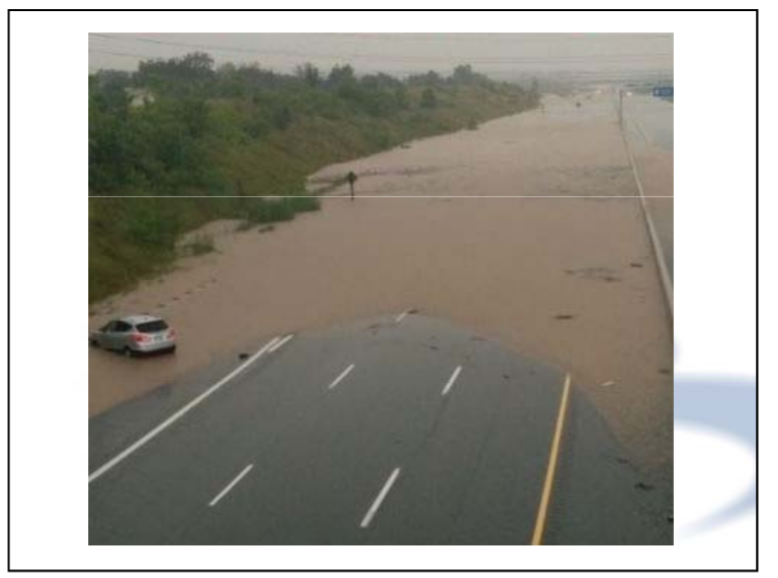
The initial damage from the flood and the cost of making sure we don’t get hit as hard next time – Mayor said we need to plan for the next one
As a result of the thorough analysis and extensive reports completed by the City and Region, we have committed a total of more than $120 million over the next 10 years to improve our resiliency in the event of extreme weather.
A City That Moves
A City That Moves is where people and goods move through the city more efficiently and safely.
A City That Moves offers a variety of convenient, affordable and green forms of transportation that align with regional travel patterns. This is a city that features walkability within new and transitioning neighbourhoods, as well as in our downtown.
We are investing $300 million over the next 10 years on our roads, which includes such projects as road reconstruction, resurfacing and intersection widening.
However, moving forward, we are shifting our focus on moving people through more sustainable modes of travel that do not rely exclusively on the automobile.
Ninety per cent of all trips made on a weekday within our city – which number more than 260,000 – are made by automobile. Furthermore, 50 per cent of these trips are five kilometres or less.
Walkable trips are considered to be two kilometres or less. Bikeable trips are considered to be within the two to five kilometre range.
These are the ideal distances to cycle, walk or hop on a Burlington Transit bus – including to and from one of our three GO Stations.
Just ask Councillor Jack Dennison, who is on the cycling committee and can be found cycling to events on weekends.
Long-term, we are looking to implement a complete streets vision. This vision will be part of an integrated plan that will see on- and off-road bike lanes, sidewalks, multi-use paths and trails and public transit well-connected and coordinated.
Complete Streets will make Burlington more walkable and bikeable, support investments in transit, foster social engagement and community pride, support the local economy and property values, and improve the livability and long‐term sustainability of our region. Burlington will be a better place to live and work, realizing long‐term savings from improved public health and safety, environmental stewardship, social mobility and transportation equity.
Speaking of transit, we are expecting full implementation of our transit intelligent transportation system within the next few months. This includes a website, trip planning function, real-time information and stop announcements.
Creating walkable neighbourhoods directly relates to a City that Moves and a City That Grows.
Noted American urban planner Jeff Speck notes that a walk has to satisfy four main conditions: it must be useful, safe, comfortable and interesting.
When I ask people what they like most about living downtown, they respond it is they can walk everywhere. That is one of the reasons Councillor Marianne Meed Ward says she enjoys living downtown.
Just as Councillor Meed Ward walks to work every day, we want to develop more neighbourhoods across the city where people have that same opportunity.
Mobility hubs offer significant potential for intensification and walkability.
These are places of connectivity where different modes of transportation – from walking to commuter rail – come together seamlessly.
There are currently 3,500 customers using the Burlington GO station on a weekday. The addition of more than 900 residential units further transforms the site into a walk-friendly, cycle-friendly, transit-friendly neighbourhood that also includes office and retail. GO customers can look forward to 15-minute service on an electrified Lakeshore West GO line within the next decade.
This type of development also gives first-time homebuyers, especially young professionals, a chance to enter the real estate market, as well as those looking to downsize, units at a good price.
A Healthy and Greener City
A Healthy and Greener City is one in which the City of Burlington is a leader in the stewardship of the environment while encouraging healthy lifestyles.
In this area, I believe we are ahead of other municipalities with our Community Energy Plan, as well as our vast array of parks, recreation facilities and programming.
According to the respondents of our online survey about the draft Strategic Plan, a Healthy and Greener City was ranked as the most important of the four key directions.
Our health is one of our greatest assets.
Last week, NASA confirmed 2015 was Earth’s warmest year since record-keeping began in 1880. While last saw a major El Niño weather system, this dubious milestone was largely driven by climate change. Fifteen of the top 16 warmest years have occurred since the year 2000.
Healthy Lifestyles
Going back to Brent Toderian’s comments, the potential advantage of creating more density is making walking, biking and transit more appealing, which fosters improved public health.
Healthy living in Burlington is supported by a well-planned city with walkable neighbourhoods featuring good access to parks and recreation facilities.
We will ensure every resident lives within a short distance of parks or recreational spaces, creating multi-use parks and green space, and supporting the Bruce Trail. The city’s approximate 50-50 split between rural and urban settings has positioned us as a city rich in outdoor recreational space.
Good programming at top-level recreational facilities also promotes healthy living. Last January, for example, we opened a revitalized Mountainside Recreation Centre, which features an arena, outdoor pool and community space. This centre has become a draw for young people at the weekly No Socks for Ivan drop-in, with an upwards of 200 youth and teens coming weekly.
Councillor John Taylor was a staunch advocate in the revitalization of this recreation centre, and I know the community is grateful for his role in its transformation.
Late last year, City Council also approved a rebuild of Nelson Pool at a cost of approximately $5 million. The updated facility is scheduled to open in 2018, possibly earlier if construction goes well.
Related to a Healthy City and An Engaging City, a new initiative created by the City of Burlington that I am particularly excited about this winter is the neighbourhood rink program. Sixteen parks will feature 18 neighbourhood rinks for the 2015-16 winter season. This supports our parks and recreation mantra: Live and Play Every Day.
The rink program was inspired by Seattle community builder Jim Diers, who worked with our staff on neighbourhood power.
Inspired by Jim’s work, City Council approved $80,000 for community investment. This funding will support residents and groups of neighbours in enhancing city space by adding a park feature, creating an event or starting a new program.
Burlington is also one of 45 communities across Ontario taking part in the Healthy Kids Community Challenge. The City will receive up to $1.1 million in one-time funding from the Province between April 2015 to March 2018 to promote children’s health through physical activity and healthy eating.
Healthy living is also connected to good community health care. The City of Burlington has committed $60 million to the redevelopment and expansion of Joseph Brant Hospital. This is the city’s largest investment in a non-city facility in the history of our community.
Groundbreaking took place in March 2015 for the redevelopment and expansion project’s second phase: a new seven-storey patient care tower.
When construction of the tower is complete in 2017 Joseph Brant Hospital will feature 172 acute inpatient beds, a new emergency department, a larger cancer clinic, nine new operating rooms, expanded medical, surgical and outpatient services, and much more.
Joseph Brant Hospital treats more than 250,000 patients each year. The hospital opened in 1961, but has not had a major renovation since 1971.
I want to thank the provincial government for their significant investment that will cover approximately two-thirds of the total cost of the project.
The Joseph Brant Hospital Foundation is close to reaching its $60 million contribution. To date, the foundation has raised $48 million thanks, in part, to significant donations in 2015 from the Joyce Foundation, Voortman Cookies (Mr. Harry Voortman) and Longo’s Family Charitable Foundation.
A healthy and greener city encourages sustainable projects. Our community gardens program has been well received by the community and we are looking to continue to grow it.
Burlington City Council appreciates Halton Regional Council’s support of the Burlington Beach Regional Waterfront Park Master Plan. The development of this park will enhance the Region of Halton. The park features a natural sand beach that is part of a unique landform called a Baymouth Bar. It is also home to provincially and regionally rare plant and animal species.
The estimated project cost is more than $51 million. The majority of the Burlington Beach Regional Waterfront Park plan will be developed over the next five to ten years. It could take up to twenty to twenty-five years to completely finish the park.
Environmental Leadership
The ongoing implementation and updates of the Community Energy Plan are integral to moving forward as a city on environmental leadership.
This past year, we had a number of accomplishments connected to our Community Energy Plan: Burlington Hydro’s co-gen pilot project, our first electric vehicle charging station on city property and my Inspire Burlington Series/Take Action Burlington event with David Miller from the World Wildlife Fund.
We are also in the process of completing phase one of our community energy system feasibility study. The study is looking at opportunities for more efficient and sustainable local generation of thermal energy with electrical generation.
Long-term, we are looking to continue moving forward on environmental leadership through a variety of initiatives, such as city operations that are carbon neutral, increasing our urban forest and tree canopy, and continuing to preserve our rural area.
We continue to be proud partners in the Cootes to Escarpment Eco-Park System. This is a collaboration between ten local government and non-profit organizations to protect, restore and connect more than 9,600 acres of natural lands at the western end of Lake Ontario.
David Suzuki said: “I can’t imagine anything more important than air, water, soil, energy and biodiversity. These are the things that keep us alive.”
An Engaging City
In a city that engages, community members are engaged, empowered, welcomed and well-served by their city. Culture and community activities thrive, creating a positive sense of place, inclusivity and community.
Our vision of an engaged city builds on the foundation we have laid since our Engagement Charter was approved by City Council in 2013.
We created and launched the Get Involved page (www.burlington.ca/getinvolved) for all things citizen engagement on the city’s new website. This includes our online platforms – Let’s Talk Burlington and Insight Burlington, Get Involved calendar and volunteer opportunities.
In the past year, we engaged thousands of residents online on a variety of topics, like the Transportation Master Plan, community gardens, Strategic Plan, budget, intensification and parking.
Councillor Paul Sharman’s engagement with the community around the potential redevelopment of Lakeside Plaza is commendable. Last November, more than 300 residents came out to the Lakeside Plaza visioning exercise.
Budget
It goes without saying that a major priority for council and staff is balancing increased services and investments with the need for responsible tax rate increases.
The capital budget was approved in December and the operating budget for 2016 was approved this week.
When combined with the Halton Region and the school boards, the overall property tax increase is 2 per cent and that number is inclusive of a 3.14 per cent increase in the city’s portion.
The city increase of 3.14 per cent is broken down as follows:
The base budget increase of 1.28 per cent that is less than the Consumer Price Index.
A 1.44 per cent increase dedicated to the renewal of the city’s infrastructure.
42 per cent to increase service levels in areas such as winter maintenance, bylaw enforcement and storm water management.
The 2016 budget marks the second year the city presented the operating budget in a service based format. Under this approach, business plans are developed for all 37 of the services provided by the city.
We will continue to strive towards annual property tax increases that are responsible to current and future residents, as well as reflect inflationary increases, infrastructure renewal and increased service investments.
Government Partnerships
Building strong relationships with other governments also moves us towards our goals as a city.
Federal infrastructure investment, which we support 100 per cent, is a key priority of the new Trudeau government.
Property taxes in Ontario are the highest in the country, so we also welcome the federal investment in identified priorities around affordable housing, public transit and climate change.
I look forward to working with our Members of Parliament Karina Gould, Pam Damoff and Lisa Raitt on these issues.
Recognizing that municipalities are a provincial responsibility, it is only natural I have regular contact with our Members of Provincial Parliament Eleanor McMahon and Indira Naidoo-Harris on a wide range of issues, including transit and transportation, environment and municipal legislation.
Meanwhile, the cities of Burlington and Hamilton are involved in discussions through our city managers. The two mayors and members of council also meet as the Greater Bay Area Subcommittee to discuss areas of common interest.
It is noteworthy that Burlington and Hamilton’s chambers of commerce are hosting the second annual Bay Area Economic Summit in June.
This term, I have also played a leading role at the Association of Municipalities of Ontario. I currently serve as the Chair of the Large Urban Caucus and the Chair of the Climate Change Task Force. I am also on the Memorandum of Understanding team, which meets regularly with the Minister of Municipal Affairs and Housing and other members of provincial cabinet discussing proposed changes to policy and legislation affecting municipalities.
Public Engagement Through Cultural and Community Activities
As the City of Burlington grows and will continue to do so over the coming decades, we are diversifying. It is essential to foster a Burlington where everyone feels welcome, regardless of age, race, gender or sexual orientation.
Councillor Blair Lancaster represents one of our most culturally diverse wards. She is focused on creating a strong sense of belonging in neighbourhoods in her ward, as well as city-wide through her role on the inclusivity advisory committee.
The ongoing initiative of Burlington groups sponsoring Syrian refugees and the outpouring of support is an example of the embodiment of engagement and inclusivity.
Arts and Culture
Thanks to city investment and the dedication of leaders, boards, staff, and members of the arts and culture community, I believe we are starting to fully realize the tremendous assets we have right here in our city.
The Burlington Performing Arts Centre was booked for more than 600 uses last year, with in excess of 100,000 visitors. Based on the recent economic impact study in 2014, the arts centre generates $7.8 million in annual economic activity, with room to grow. It also serves as a world-class venue for many local groups, from our Burlington Teen Tour Band and Symphony on the Bay to Tottering Biped Theatre and Burlington Student Theatre. Suzanne Haines became the centre’s new executive director last year.
The Art Gallery of Burlington saw another good year, with new leadership from Robert Steven as the president and CEO. There were 45,000 visitors to exhibitions, not including visitors from facility rentals. There were also 24 exhibitions in their five gallery spaces in 2015.
Last year, Burlington Museums connected with a large number of young people, in particular, through its education programming. Almost 5,000 children visited the museums through camps, and school and youth group education programs.
More than 1.1 million people visited Burlington Public Library’s seven branches in 2015. The library loaned out nearly 2 million items last year – the equivalent of each resident in Burlington borrowing 10 to 11 items.
Last year marked a historic moment for the City of Burlington’s Public Art Program when six murals were unveiled by seven local artists at one time in December 2015.
There are also the numerous festivals and events that showcase our city and boost our local economy. Hundreds of thousands of people come from near and far to take in events like the Sound of Music Festival, Canada’s Largest Ribfest, the Children’s Festival and Canada Day.
Arts and culture has been a cornerstone of societies throughout history and they will continue to be so in Burlington as we look to the future. Canadian scientist Steven Pinker said: “There is no society ever discovered in the remotest corner of the world that has not had something that we would consider the arts.”
What do we want Burlington to be in twenty-five years?
We want to be a city that grows, a city that moves, a healthy and greener city and a city that engages.
Let’s work together to make our great city even greater.
State of the city addresses by Mayor Rick Goldring:
State of the City 2011
State of the City 2012
State of the City 2013
State of the city 2015














